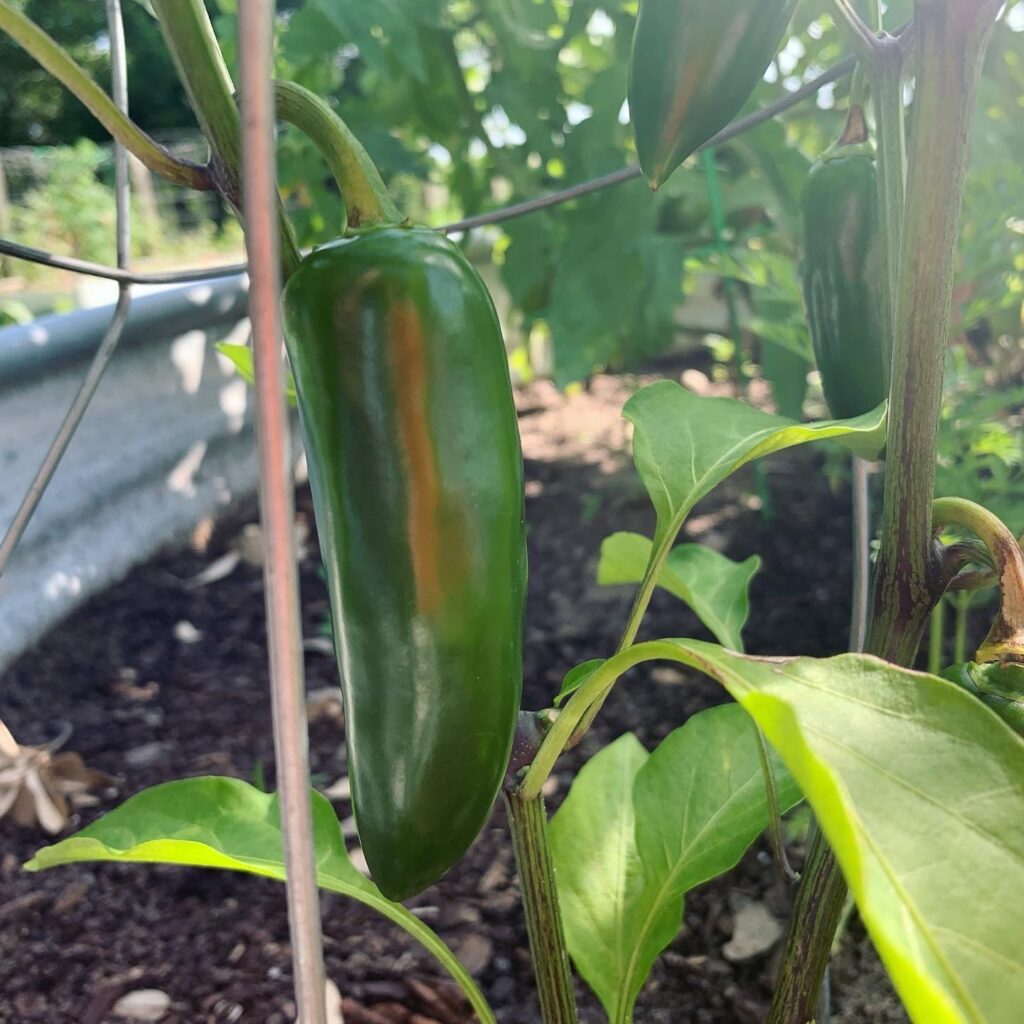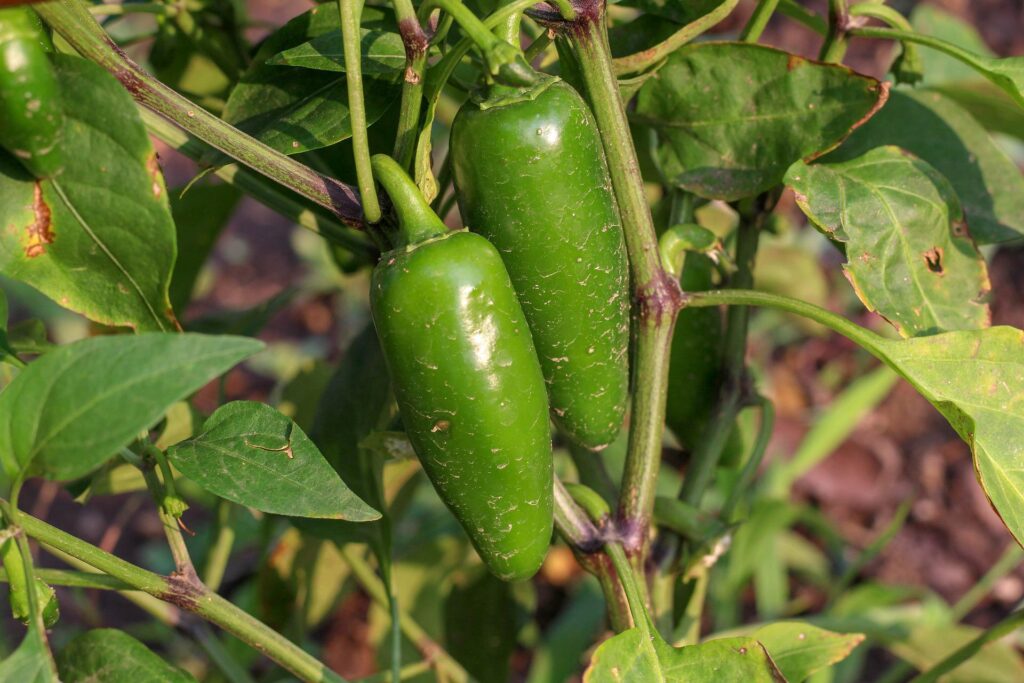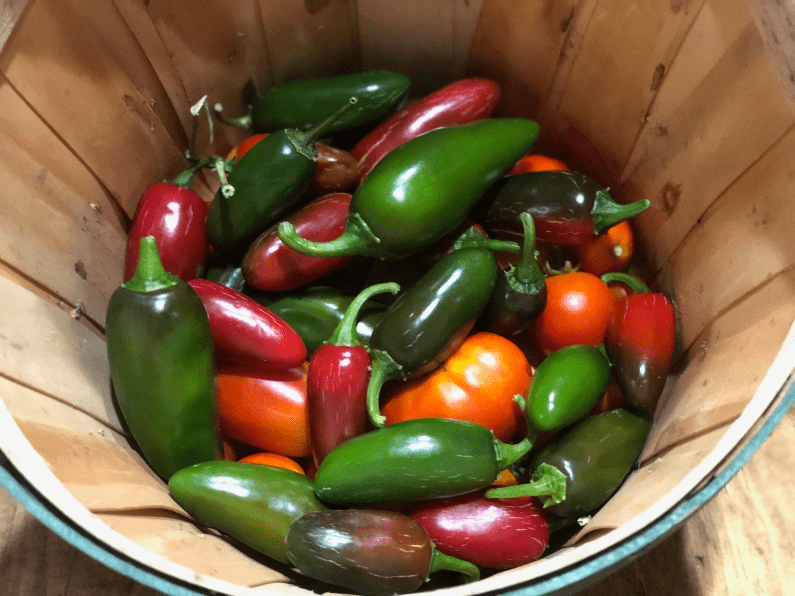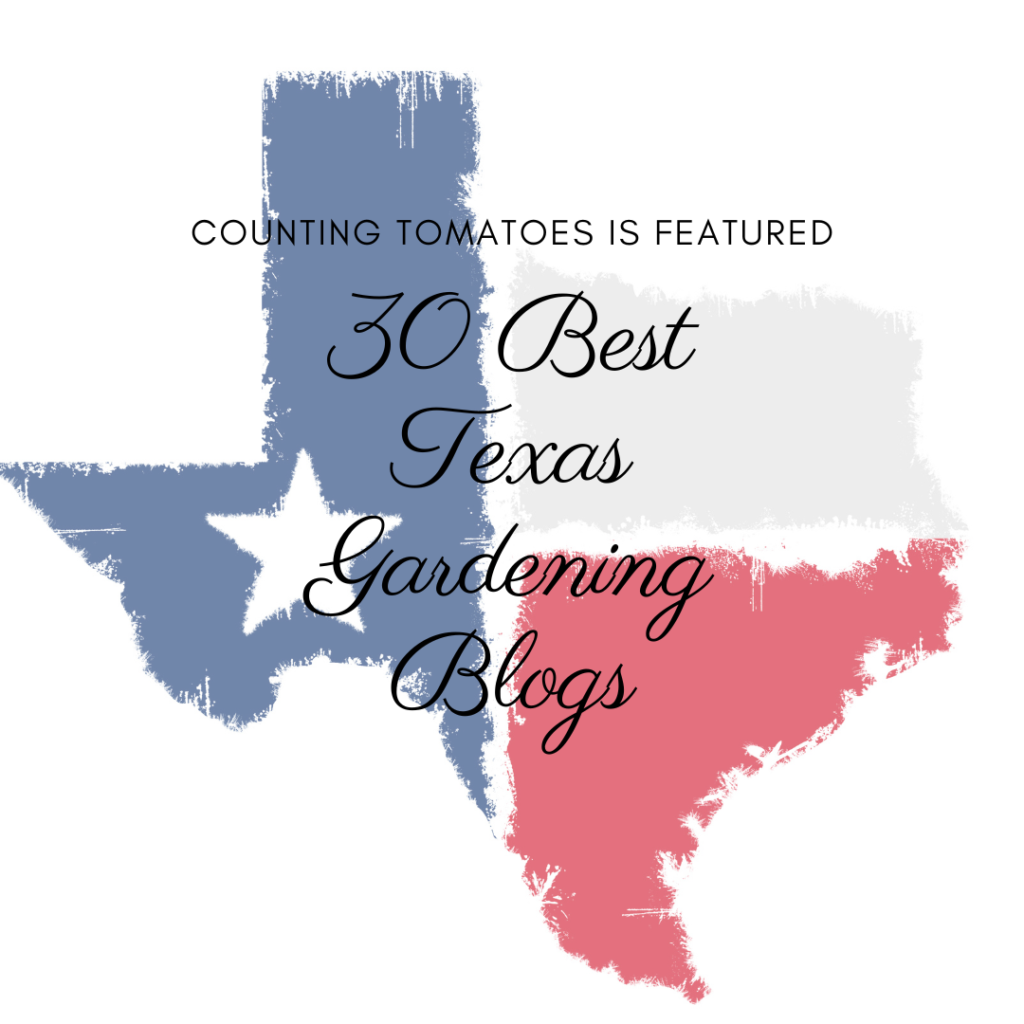Here are all of my tips and tricks for how to grow jalapenos in pots or containers to yield a season long harvest of fresh jalapeno peppers from your container garden!
Jalapeno peppers (capsicum annuum) are a staple ingredient in my kitchen and I love being able to pick a pepper right off the plant for use in a recipe. Jalapeno plants are so easy to grow and I will show you step by step how to grow jalapenos in pots or containers on your patio. Jalapeño plants originated in Mexico and jalapeño is Spanish meaning “from Xalapa” which is the capital city of Veracruz where the plants were originally cultivated.
Fun Fact: did you know that chipotle peppers are dried, smoked jalapenos? Jalapeño peppers were left on the vine to ripen to a deep red colored and then were smoked to preserve them by ancient civilizations. Canned chipotle peppers in adobo sauce can be found in most grocery stores and are a wonderful addition to sauces and south American dishes.

How to Grow Jalapeno Pepper Plants
Growing Plants from Jalapeno Seeds
Jalapeno peppers are offered in a variety of colors and heat units. You can source a variety of seeds to find the right jalapeno for your taste! Some of my favorite jalapeno seed choices are:
Colossus Jalapeno Pepper is a hybrid pepper and is the perfect size pepper for jalapeno poppers. It ranges from mild to medium in heat and is perfect for stuffing with cream cheese and wrapping with bacon. This variety is resistant to bacterial spot.
Jalafuego Jalapeno Peppers are the right choice if you want the hottest pepper. These peppers are on the higher end for jalapenos of the Scoville scale with a 4,000 – 6,000 heat rating units. The jalafuego jalapeno has high disease resistance to bacterial leaf spot and potato virus.
NuMex Lemon Spice Jalapeno Peppers start out as green peppers and ripen to a brilliant yellow color. These jalapenos are a beautiful color addition to fresh salsa or pico de gallo.
How to Plant Jalapeño Seeds
To grow jalapenos from seed, start the seeds 8 – 10 weeks before you plan to transplant them outdoors. Fill your seed trays with a quality seed starting mix. Thoroughly wet the seed starting mix and plant one to two seeds per cell about 1/4″ deep. I cover the top of each cell with perlite to promote drainage. Jalapeno seeds germinate best in soil temperature that is around 80°F; they will not germinate in soil less than 70°F. If your soil is not reaching the ideal temperature, use a heat mat under your seed trays. Once the jalapeno seed germinates, place the seedlings under a grow light immediately. Position the grow light 1″ from the top of the seedling.

Once the jalapeno seedling is 2″ – 3″ tall and has several sets of true leaves, I step up the seedlings to small pots. When I start seedlings indoors, I harden off the seedlings by increasing their time outdoors each day until they are spending all day and night outside. When starting jalapeno seeds for fall planting, I start them outdoors as we have extremely warm nights enabling the soil temperatures to stay around 80°F. I do not harden off seedlings that were grown exclusively outdoors.
How to Plant Jalapeño Seedlings in Pots or Containers
Whether you are starting with jalapeno seedlings from a local nursey or you grew your own from seed, the planting instructions are the same. Select a larger pot or container around 5 gallons with drainage holes. I prefer these plastic 5 gallon pots or you may also use a grow bag. Fill your planting container with a good quality potting soil; I prefer to use Miracle Grow as it has compost and peat moss mixed into the organic matter. Well-drained soil is ideal to prevent root rot.
Dig a hole in your potting mix and incorporate 2 tablespoons of worm castings to act as a slow release fertilizer. To prevent blossom end rot, I incorporate 1/2 cup of pelletized gypsum into the planting hole. Plant the seedling at the same depth as it was growing in its container. Keep the soil moist, but not waterlogged. When the top 1″ of soil in your container feels dry, it is time to water.
Fertilizing Jalapeno Plants in Pots or Containers
As the jalapeno seedling is growing, I add add organic fertilizer every 2 weeks when watering. During the growth state I use AgroThrive All Purpose Fertilizer. Once the jalapeno plant flowers, I switch to AgroThrive Fruit & Flower Organic Fertilizer to promote fruit production. Jalapenos grown in containers do not require as much fertilizer as jalapenos planted directly in the ground.
Temperature Requirements
Jalapeno peppers thrive in temperatures from 60°F – 90°F. Any temperatures over 90°F will negatively impact fruit production and blossoms will drop from the plant. Jalapeno plants can experience damage in cold temperatures below 40°F and are not frost tolerant. Container gardening is a great way to ensure your plants are not subject to adverse weather conditions. Temporarily move the plants indoors if cold temperatures are in the forecast.
Light Requirements
Jalapeno plants require up to 16 hours of direct sunlight each day. Select a sunny location on your patio for your potted jalapeno with no less than 8 hours of full sun for the best results.
Pollination Requirements
Jalapeno plants are self pollinating with assistance from the wind and insects. They can also cross pollinate with other pepper plants. If you are growing your jalapeno plant in a pot or container in a greenhouse, periodically shake the plant to ensure pollination.

Pruning Jalapeno Plants
A jalapeno plant will mature at a height of 24 – 36″ and a width of 12 – 24″. Pruning is not necessary for plant vitality, however, you may lightly prune the plant if you are limited on space. When pruning a jalapeno plant, take care not to prune off too many flowers which will result in less fruit.
Common Jalapeno Pests and Diseases
Jalapeno plants are not plagued by too many pests or diseases making it one of the easiest crops to grow. Aphids are one of the most common problems of growing peppers. Aphids feed by sucking the sap from plant leaves and stems. They leave behind a sticky substance that often attracts ants. Identify aphids by looking under the bottom side of the plant leaves for tiny little green bugs. If there are only a few aphids, you can remove those by hand. If there are more than a dozen aphids you can spray them off with a water hose. You will likely have to repeat the process for several days. For an extreme aphid infestation you can spray your plants with insecticidal soap or a solution of neem oil. Be sure to spray the neem oil before daylight or after sunset to prevent leaf burn.
A common disease of jalapeno plants is blossom end rot. Blossom end rot can be result from a lack of calcium in the soil or from the plants inability to absorb available calcium. Over watering can prevent the plant from updating available calcium in the soil. Adding pelletized gypsum to the planting hole when planting and consistent soil moisture can prevent blossom end rot.
Bacterial and fungal diseases can also plague jalapenos such as blight, mosaic virus, leaf spot and verticillium wilt. Some are caused by soil borne pathogens and some are spread by insects like aphids. The best way to prevent fungal and bacterial disease in your potted jalapenos is to begin with a clean pot, use new potting soil, water at the base of the plant, plant disease resistant varieties and keep a look out for pests.
How to Harvest Jalapenos
Expect to start harvesting your jalapenos around 60 – 70 days after transplanting the jalapeno seedling into the pot or container. Jalapenos are ready to harvest when they are 3 – 4″ long. The fruit will be firm and dark green in color. I add fresh green jalapenos to salads, fresh garden salsa, pizza, tacos, eggs and many more dishes!
You can certainly leave your jalapenos on the plant until they ripen to a beautiful red color. I let jalapenos ripen to a solid red color for use in my hot pepper jelly recipe.
For best flavor, use jalapenos within a week of harvesting.
Harvest the jalapeno peppers by gently snapping the pod off from the stem or use clean pruning shears to clip each pod. The more often you harvest the fruit the more fruit your jalapeno plant will produce.
When handling any hot peppers, including jalapenos, wear gloves when touching the inside seeds and membranes. The inside of the pepper is where the capsaicin is located and can cause burning of your skin and anywhere else you touch.

Lifespan of a Jalapeno Plant
Most people grow jalapeno plants as annuals and replant them every year. One of the pros of growing jalapenos in pots or containers is over wintering them indoors or in a heated greenhouse. Jalapenos can live up to 5 – 10 years if kept in the right growing conditions. Move the plant indoors when the nighttime temperatures drop below 60°F and ensure it is getting full sun. Taking care of your jalapeno plant will help it to thrive for many years!
Even if you have limited space, one jalapeno plant will be a welcome addition to your garden. Jalapeno peppers plants are easy to grow in pots and containers and add a wonderful, fresh flavor to many culinary dishes.


